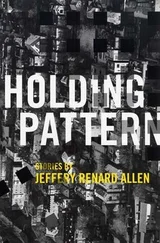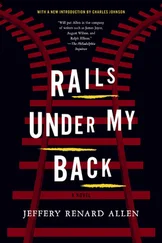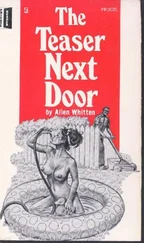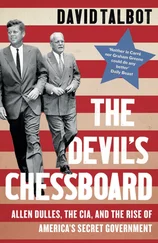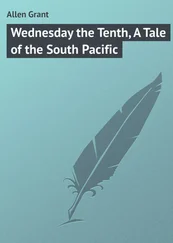Back at the Asylum, she saw to it that the new arrivals were thoroughly washed and comfortably dressed, each child’s hair combed free of lice, each body put to bed under folds of fresh linen in the Inspection Ward, awaiting Dr. McCune’s examination. The admissions were naturally reluctant to undergo examination, poking and prodding, but before Dr. McCune all their defenses vanished. They gave in with trustful surrender, the ready-made quality about the way he spoke. Disrobe, please. Including shoes and undergarments. Miss Viel here will take care of your belongings. At times she found herself speaking the diagnosis even before he had. The cleared would be taken immediately to the appropriate ward housing their peers, Whole Orphans or Half Orphans, and the wing therein specific to their sex — the wards could amalgamate during meals, boys on one side of the dining hall, girls on the other — where they would be ghosts for several days, invisible, suffering at arm’s length a brief trial of discretionary exclusion before they were accepted into the fold. The eye-sick were afforded the opportunity of surgery to remove the diseased orbs. (One darkness defining another. N ow the eyes of Israel were dim for age, so that he could not see. ) To aid in healing and lessen the chances of inflammation, Dr. McCune would apply a thick paste made from crushed peanuts and water— peanut butter he called it — over the empty eye sockets, two six-inch-high brown mounds that would remain in place for up to a week. Eliza was there to fan flies away and pluck ants and cockroaches from the paste. To wet fever with cold compresses and diminish pain with warm opium. Once the paste was removed, Dr. McCune had to judge that no part of the infection had escaped to another region of the body, before the patient could be assigned his/her own bed in the Eye Ward. Dr. McCune put a high practical value on his work at the Asylum, believing that it aided and enhanced his research and his private practice in the homes of the city’s wealthy Negroes and in his own home, those packs of proper Negroes who made daily pilgrimages to his apartment (3A) in their well-cut clothes, depending on his dogged efforts to keep them in top form.
Was it this blood commitment, the bond and obligation of Race, that laid the unspoken rule that the Bethunes would only enter his home as friends, never as patients — had he offered? had she or Sharpe? — however much the Bethunes were in perfect accord with his moral and professional life? Bound up with the Asylum, the circumstances of that life first established between Eliza and the Doctor passed on to Sharpe. Tracing back, she recognizes now that it was through her that the two men met and that she had a hand in the friendship they forged, unaware that in serving as this instrument of connection she was sealing the fate of each and forever linking her and Tom. (True, but one should beware of such judgments.) Not that the pattern is completely clear to her, the where what why and when, the x that preceded y and z, only that she is at the center of the likeliest sequence of events. Sharpe is gone now, forever, no coming back, but she distinctly recalls the morning, a few days after Tom’s benefit recital, when Sharpe called at the Asylum, his face smooth and smiling — yes — and without a word took her hand where it rested at her side and shook it gratefully. His uncalendared appearance — a new intake of feeling — the moment she pinpoints as the start of their enthusiastic days together. Sitting over tea in the matron’s office, he expressed his hope that they should again entertain the children at some point in the not too distant future. He had no sooner finished his cup than he rose to leave. Their stay in the city would be short; there were places to be. Something in his tone of voice, a glimmer beneath the words— We welcome another opportunity —in his posture and manner and excitement — partly observed, remembered, partly dreamed — occasioned in her a feeling that his linen-dressed body was a conspiratorial screen designed to mask the true intentions of his visit. He seemed to want to talk to her. (The screen too easy to see through.) A hope belief powerful enough to pluck up her courage to ask him, the caller— Mr. Bethune he was to her then — if one afternoon he might desire to leave the side of Tom and the manager for a few hours and accompany her for a walk about town so that he might embrace the good weather and see— Allow me to show you ; was that it? — if not visit — yes, that was it — a few of the city’s most impressive sights, just the thing he might need to feel fortified and refreshed before carrying on with the many duties — the boy needed to be outfitted for the approaching concert season less than a month away — and blur of appointments awaiting him. Of course, for her to extend such an offer was to overstep the boundaries of acceptable behavior, action made even more brash and bold given the many speculations and rumors circulating in the journals at the time concerning the reasons why Sharpe’s father, General Bethune, several months earlier, had removed Tom’s longstanding manager and replaced him with a new one, Warhurst, and given that the General’s scheduled visit to the city in a few weeks as a stop on his national tour (Save the South!) to raise funds and supporters for the Confederacy was the talk of the town. (The stories always seemed to be accompanied by that now familiar photo of the General, posed behind the seated pianist, one hand in paternal rest upon the boy’s shoulders, the boy’s fingers — those cherished objects — fitted together in two fists of knuckles inside his lap.) For his part, Mr. Bethune readily accepted. In view of the (his) circumstances, he suggested the sooner the better. Why not tomorrow? Why not.
They rendezvoused on an unusually fine day, one of those summer afternoons that commanded the populace out of their homes. Wherever one looked, people were pouring out of open doors. On the street, everything was rushing and physical, a light gaiety in the air. Men touching theirs hats in mute greeting, women tilting their faces forward to smile. At her suggestion, they began walking toward Central Park, the nearest lawn only a few blocks away. What better way to impress him on their first outing than with the city’s most impressive location? (He was a foreigner after all, a Southerner.)
Once they reached the park, they started down the wide central lane, which wound five miles from one end to the other. The park was only a few years old at that point; Seneca Village, the northernmost section of Black Town, had been razed and the park constructed in its place as part of a municipal beautification project. But the Negroes had never completely relinquished their hold, sanctioning the park as their communal site. This day dozens of celebrants strolled about, a flash of unrestrained smiles and theatrical bodies done up in lavish and gaudy costumes, a hundred colors and cloths heating the holiday — John Canoe? Pinkster? Emancipation (state) Day? some Union victory? — air. Again and again Eliza and Mr. Bethune met by whistles, drums, gyrating hips and feet. Some of the celebrants made a fearsome impression with mock guns and swords, more comic the paltry contingents of horsemen with their sorrow-worn almost-dancing steeds. Then too something neither noble nor humorous about the knot of boys huddled into guards, ribbons of tree-circling summer-maiden girls, or the deputation of deer-skinned and eagle-feathered elders seated in ceremonial poses like some rare delegation of the most venerated and powerful Red Indian chiefs. All told, the holidaymakers, whether in couples or family groups, produced a kind of pressure of presence of which everyone was a part, an insider’s air of intimate entitlement that caused them to cast exclusionary looks at Eliza and Mr. Bethune. What’s your business here? Eliza and her guest did not allow themselves to be put out in the slightest by sucked teeth and jeers. Still, since the park had been seized by the Negroes, she wondered if she ought to have made other arrangements. Through her work at the Asylum, she had come to know a less-traveled section of the park, just down this path. Far away, not easy to see, but well worth the effort of getting there.
Читать дальше

